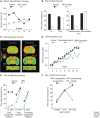Memory consolidation
- PMID: 26238360
- PMCID: PMC4526749
- DOI: 10.1101/cshperspect.a021766
Memory consolidation
Abstract
Conscious memory for a new experience is initially dependent on information stored in both the hippocampus and neocortex. Systems consolidation is the process by which the hippocampus guides the reorganization of the information stored in the neocortex such that it eventually becomes independent of the hippocampus. Early evidence for systems consolidation was provided by studies of retrograde amnesia, which found that damage to the hippocampus-impaired memories formed in the recent past, but typically spared memories formed in the more remote past. Systems consolidation has been found to occur for both episodic and semantic memories and for both spatial and nonspatial memories, although empirical inconsistencies and theoretical disagreements remain about these issues. Recent work has begun to characterize the neural mechanisms that underlie the dialogue between the hippocampus and neocortex (e.g., "neural replay," which occurs during sharp wave ripple activity). New work has also identified variables, such as the amount of preexisting knowledge, that affect the rate of consolidation. The increasing use of molecular genetic tools (e.g., optogenetics) can be expected to further improve understanding of the neural mechanisms underlying consolidation.
Copyright © 2015 Cold Spring Harbor Laboratory Press; all rights reserved.
Figures



References
-
- Alberini CM. 2005. Mechanisms of memory stabilization: Are consolidation and reconsolidation similar or distinct processes? Trends Neurosci 28: 51–56. - PubMed
Publication types
MeSH terms
Grants and funding
LinkOut - more resources
Full Text Sources
Other Literature Sources
Medical
Miscellaneous
